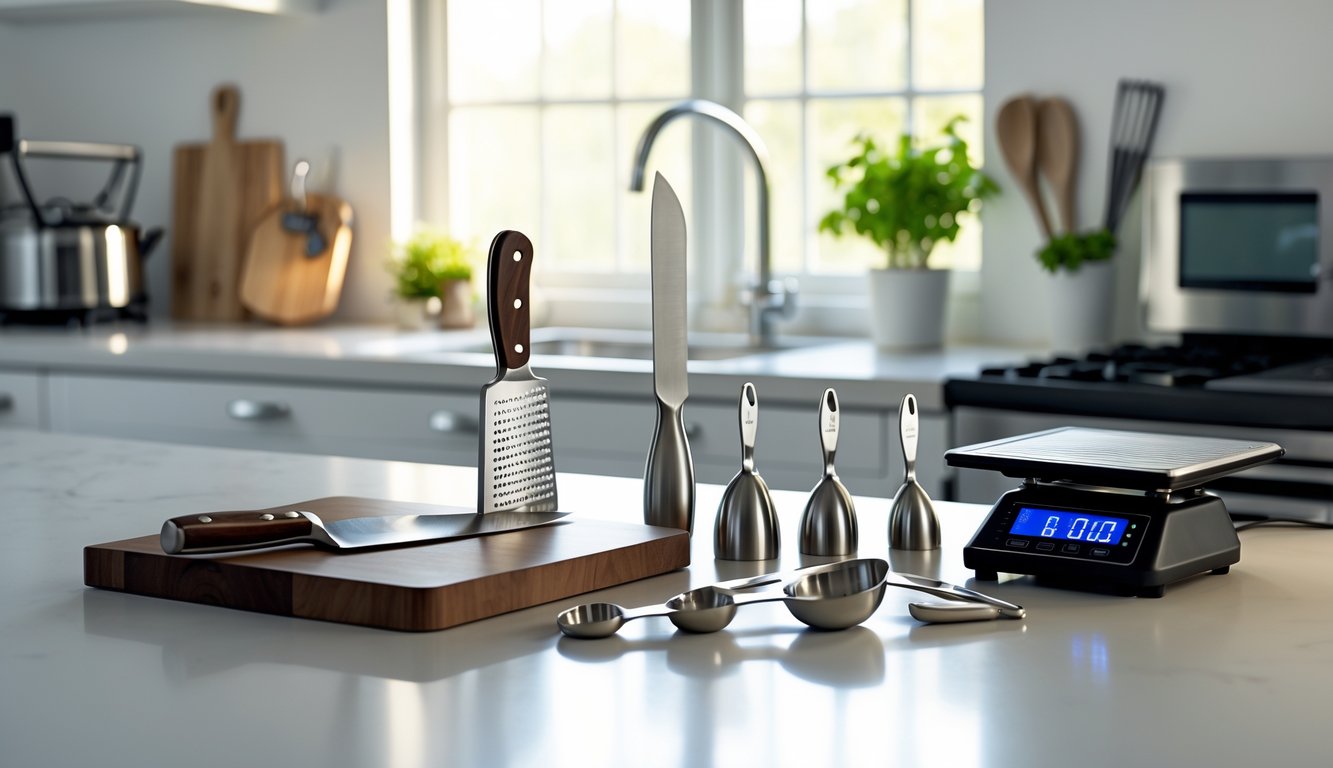
Paring Knife: Precision Cutting
Trying to hull strawberries with a chef’s knife? Nope. The paring knife is the only thing that works for detail stuff—peeling garlic, hulling berries, getting those weird eyes out of potatoes. It’s less a knife, more a scalpel for tiny jobs.
I ignored mine until I butchered tomato roses for a garnish. Never again. Forget the weird gadgets. Pros use a 3- to 4-inch paring knife, sharp and simple. Saw a pastry chef trim puff pastry with one—way faster than scissors. Chopping garlic, scoring pastry, coring peppers—so much easier with the right blade.
Serrated Knife: Versatility in Slicing
Why are there always three dull serrated knives in every block? Drives me nuts. The one sharp one? Gold. Those scalloped edges are magic—unless they’re old and useless. Never use anything else for bread or tomatoes.
Nobody mentions how handy serrated knives are for other stuff—citrus wheels, grapefruit, slicing cake layers (and yes, the cake’s always crooked). Experts say it’s one of the three essentials. I’ve even hacked through frozen cookie dough with mine (awful sound, by the way). Upgrading to a thinner, flexible model? Total game changer for bread. Still haven’t figured out how to keep toast crumbs out of the drawer, though.
Cutting Boards: Foundation for Efficient Prep
Sliced a watermelon this morning—juice everywhere, because my old plastic cutting board is warped like a potato chip. Chefs argue about board materials constantly, but what actually matters? How it holds up after months of abuse. And what it does to your knives, obviously.
Choosing the Perfect Material
Bamboo boards look great on Instagram, but half of them warp after a few months. High-density rubber? Weirdly, it’s the pro pick now—doesn’t stain, doesn’t groove, doesn’t get gross. Plastic boards? They feel like wet cardboard after a few dishwasher cycles. So much for “easy clean.”
Chefs I know swear (loudly) by heavy maple or beech—real wood doesn’t dull knives as fast. If you want to get fancy, titanium boards exist now. They’re absurdly strong, cost a fortune, and honestly, who needs a cutting board made for a spaceship? Still, if you prep all day, weight matters. Heavy boards don’t slide, which is the only thing stopping me from launching one across the kitchen after a long shift.
Sanitation and Maintenance Tips
Why does onion funk hang around forever? Seriously, every time I chop one, it’s like the board’s haunted. Plastic’s supposed to be “safe,” but let’s be honest, it’s a bacteria magnet once you’ve got those knife scars. I’ve seen chefs lob plastic boards into the dishwasher while mumbling about “cross-contamination”—and, yeah, fair point. The CDC apparently did some studies that back up plastic for raw poultry. But if you’re not actually scrubbing or bleaching after chicken, you’re basically tempting fate.
Wood boards? Gorgeous, but needy. Leave one soaking for five minutes and it’ll warp like a potato chip. I heard from someone (maybe a pastry chef? I forget) that a salt scrub is the secret for getting rid of smells. Never soak, always dry upright, blah blah. Vinegar wipe-downs supposedly kill salmonella—one chef I know swears by it, hasn’t poisoned anyone yet, so maybe it works. Rubber boards? Kind of ugly but indestructible. I dropped one on tile and it bounced, no joke. Easier to sanitize than you’d think—just bleach, rinse, done. Ignore YouTube “experts” who say otherwise. And glass boards? Why do those exist? Unless you hate your knives and your ears, just don’t.
High-Performance Cookware Pros Swear By
Just grabbing whatever pan’s clean? Yeah, I tried that, and my eggs fused to the bottom like they were auditioning for a new element. It’s not about the brand name, trust me. Every chef claims they don’t have a million pans, but they’re lying. What actually matters? Performance, how long it lasts, and—oddly enough—how much it weighs.
Stainless Steel vs. Nonstick
Show me someone sautéing in a dollar-store pan and I’ll eat my apron. Stainless steel is kind of the pro badge, and not because it’s shiny. Mauviel, All-Clad, Demeyere—those names echo in kitchens for a reason: even heating, no weird flavors, just solid results. Steak? Stainless, every time. But nonstick has its place—mainly eggs, maybe delicate fish, and that’s it. The best cookware materials debate? Never-ending. Prudent Reviews has a chart, but nobody talks about how fast nonstick pans die in a restaurant. Chefs toss them every couple months, no exaggeration. Stainless? Survives actual abuse. There’s this whole thing about “fully-clad” versus “disc-bottom,” but honestly, if it doesn’t heat evenly, it’s useless. Even Gordon Ramsay uses nonstick for eggs but goes stainless for everything else. Nobody’s loyal to brands, just to pans that don’t ruin dinner.
Importance of Heavy-Bottomed Pans
Why does my pan feel like gym equipment? Because light pans scorch food for fun, that’s why. Ask any line cook who’s tried to make a sauce in a thin pot—total mess. Heavy-bottomed pans (layered steel, aluminum core, copper, whatever) keep temps steady. It’s not just for show. I worked in this Italian joint once—every pan had a base thicker than my thumb, and that’s probably why the risotto didn’t suck. Cheap pans? Buckle on induction, warp on gas, just a nightmare. Professional cookware sets brag about their weight for a reason. “Impact-bonded bases”—not just marketing. If your pot flexes, you’re not using enough onions anyway. Watched a sous chef try to deglaze in a cheap pan once—sauce ran everywhere, fond stayed put. Tragic, honestly. I keep one heavy Dutch oven for braises, and I can never find the lid when I need it.